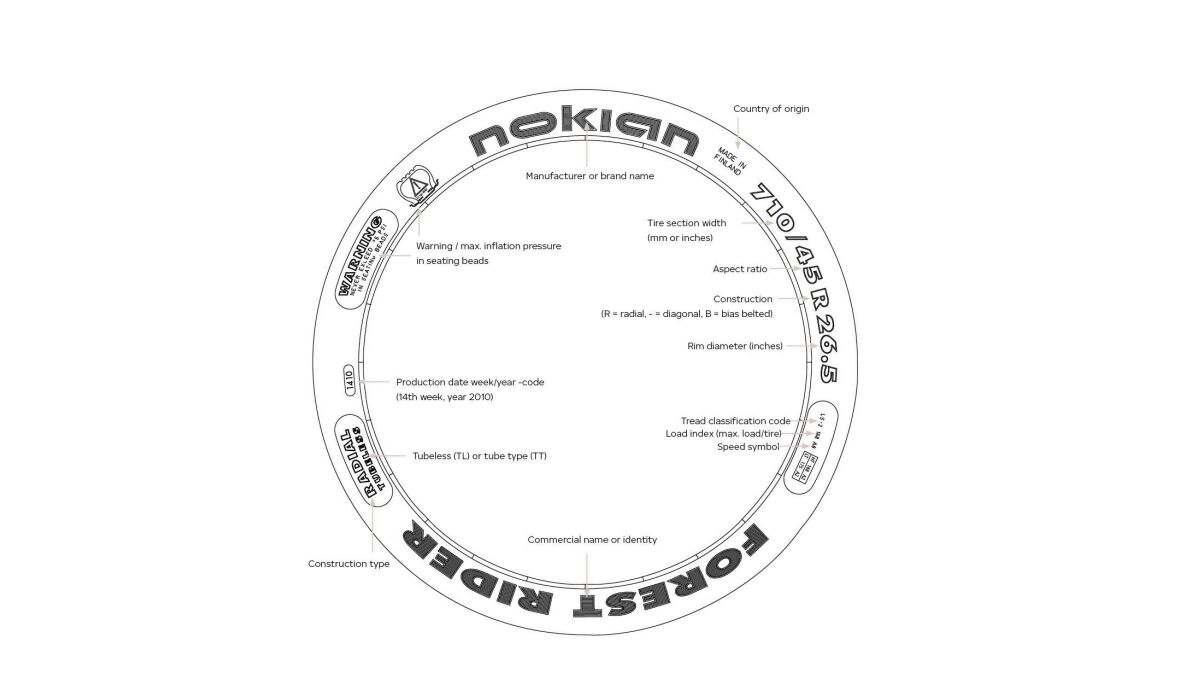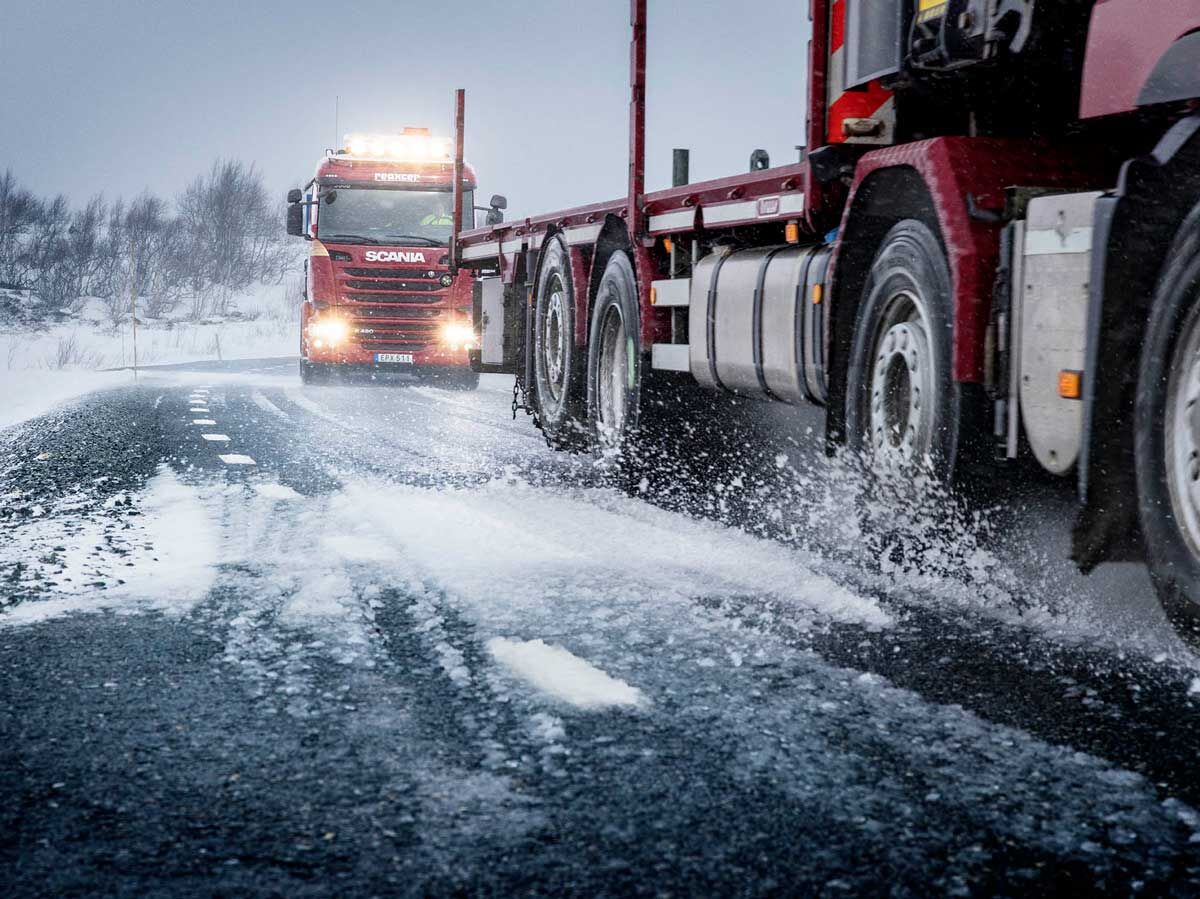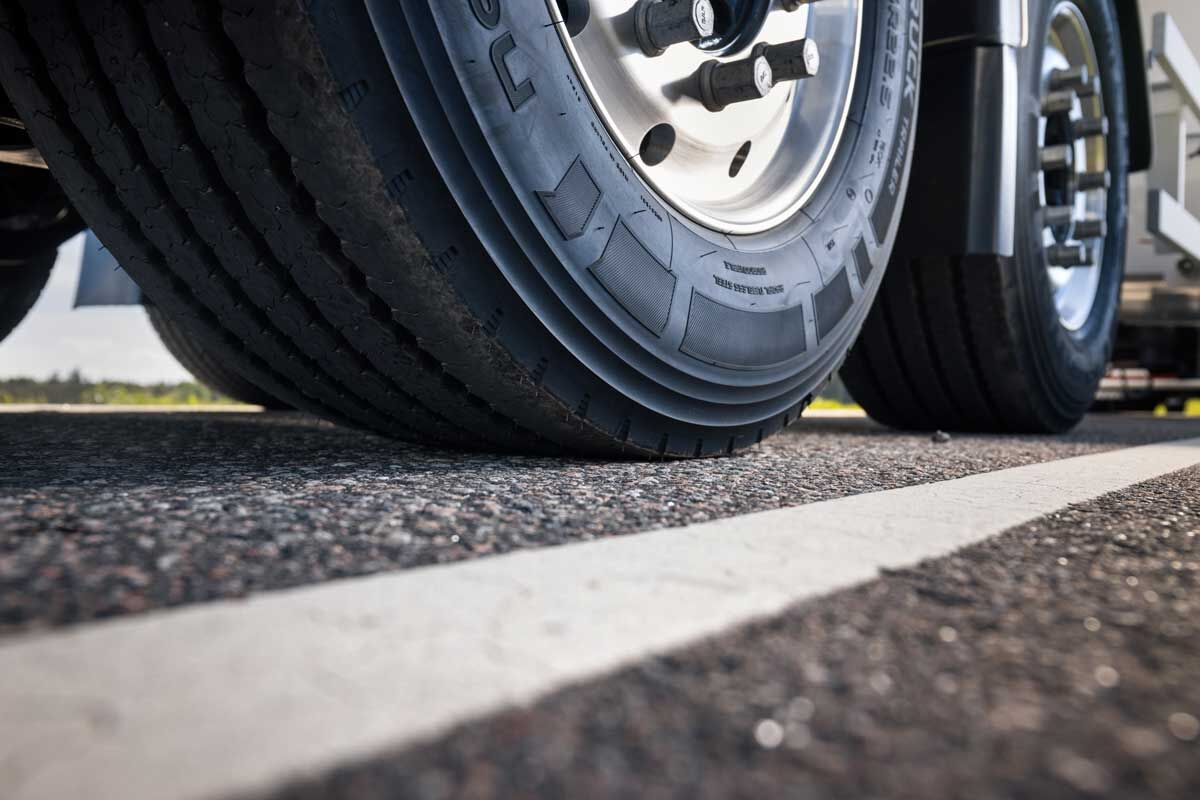
One central aspect of tire specifications for light passenger vehicles and heavy machinery alike, is the load index. The importance of tire load is even greater for commercial vehicles, including trucks, tractors, forestry machinery, and earthmoving equipment.
Understanding tire load and how it interacts with speed and tire pressure is essential for ensuring safe, high-performing and long-lasting use of your heavy-duty tires.
What is the tire load index?
Not to be confused with the exact carrying capacity of a tire in kilograms or pounds, the load index is exactly that: an index. To find out how much a certain tire can support when properly inflated, you need to check the corresponding maximum load for the index.
You can find the tire load index alongside other valuable information, such as the speed rating and DOT code, from the tire sidewall.

The load index is represented by a number starting from 0 and continuing well over 200. Each load index corresponds to a specific maximum load load capacity measured in kilograms or pounds. Remember that the tire needs to be inflated with the manufacturer’s recommended tire pressure to ensure maximum load bearing capacity.
Tire load index chart
You can check what a each number means in kilograms from our tire load index table. For example, a tire with a load index of 140 can carry up to 2,500 kg (5,510 lbs) per tire.

How to interpret load capacity tables?
The Nokian Tyres technical manual contains load capacity tables for each Nokian Tyres product and different tire sizes. These tables help you check the appropriate tire pressure and load when driving at different speeds. This will come in handy especially if you need to adjust tire pressures when operating your vehicle at slow speeds compared to faster on-road transits.
For example, here is the load capacity table for the Nokian Tyres Ground King (420/70R28 - T445733) tractor tire.

As you can see, as the operating speed increases, the tire’s load capacity decreases. However, the tire can carry a greater load with a higher inflation pressure.
Why a tire’s load-carrying capacity matters
Overloading tires is a real safety hazard for the machinery and its operator. It can lead to excessive heat buildup and tire deformation, resulting in excessive tire wear and tire failure at worst. Paying attention is all the more important in commercial operations where vehicles are heavy and carry large loads.
Appropriate load capacity also ensures optimal performance of both the tire and the vehicle due to greater handling, braking and overall stability. Furthermore, avoiding excessive loads ensures the longevity of heavy tires and, therefore, reduces overall operating costs.
Refer to the manufacturer’s recommended load index charts for each tire and always use appropriate tire pressures.
Please remember that it is the driver’s responsibility to ensure their tires are safe and suitable for their vehicle and to follow the vehicle’s manufacturer´s guidelines for proper use and maintenance. Consult your closest Nokian Tyres dealer or your vehicle’s manufacturer for specific advice.


